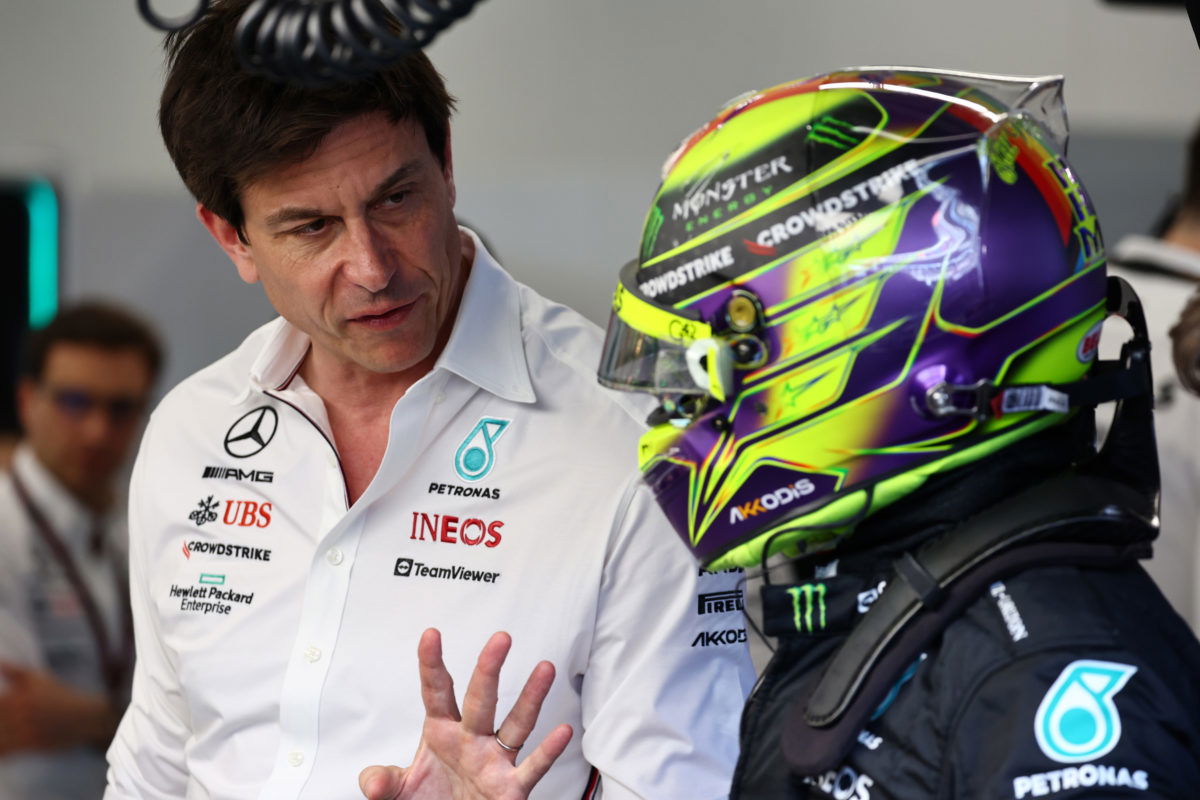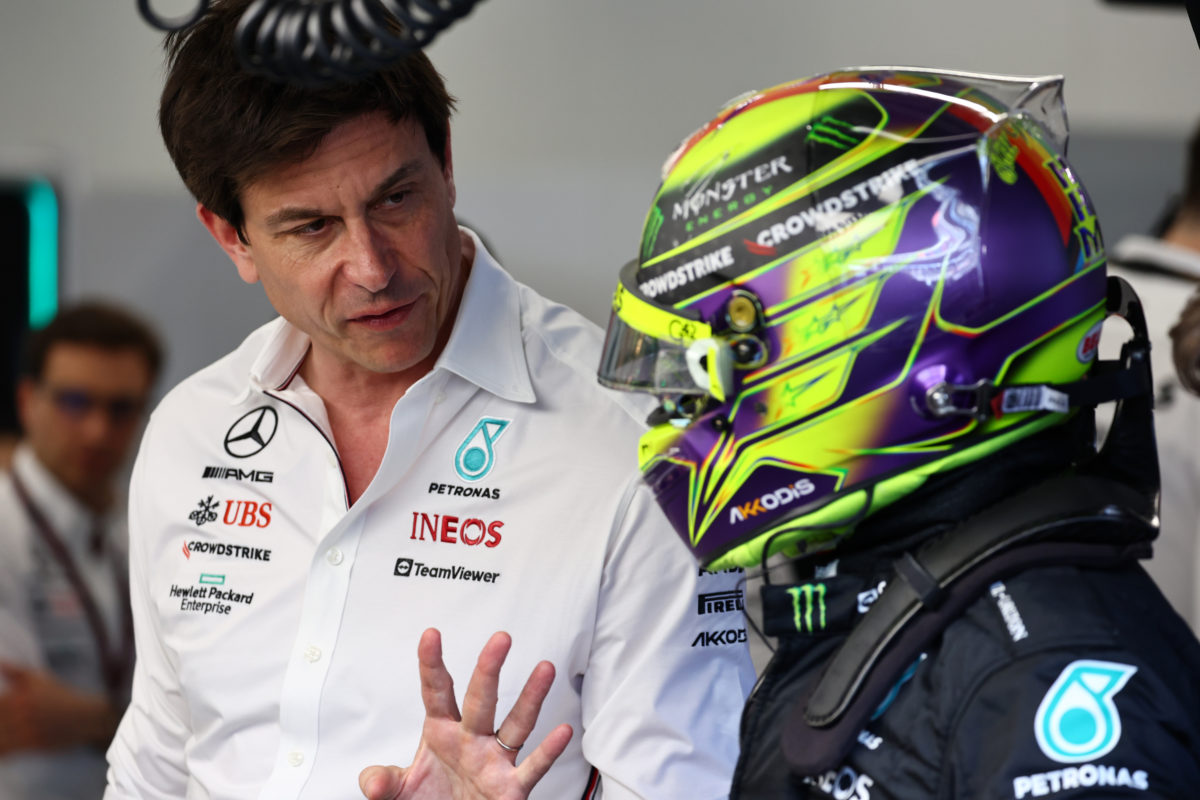

Mercedes team principal Toto Wolff has conceded there to be “no wiggle room” in the FIA’s technical regulations after Lewis Hamilton was disqualified from the United States Grand Prix.
Hamilton’s W14, along with Charles Leclerc’s Ferrari, were both found to have exceeded the permissible level of wear on the rear planks of their cars, leading to them being excluded from the classification after finishing second and sixth respectively.
The FIA’s technical department also carried out a physical floor and plank wear inspection of race-winner Max Verstappen’s Red Bull and the McLaren of Lando Norris, who was third at the flag but promoted to second due to Hamilton’s infringement, and both were found to be in conformity.
With the technical regulations being black and white, there was no case to answer with regard to lodging an intention to appeal, as is the right of teams and drivers when punished by the FIA.
Mercedes and Ferrari tried to make a case during the post-race hearings that the nature of the sprint weekend, with cars locked down in parc fermé after qualifying on Friday, and the excessively bumpy nature of the Circuit of The Americas, were contributing factors, but to no avail.
Wolff said: “Set-up choices on a sprint weekend are always a challenge with just one hour of free practice, and even more so at a bumpy circuit like COTA and running a new package.
“In the end, all of that doesn’t matter – others got it right where we got it wrong and there’s no wiggle room in the rules.
“We need to take it on the chin, do the learning, and come back stronger next weekend.”
Trackside engineering director Andrew Shovlin also pointed to COTA’s problematic uneven surface, which was criticised by Verstappen, Hamilton, and Norris post-race, as playing a role in the technical breach but cannot be used as a defence.
“We are, of course, naturally very disappointed to lose our podium finish,” said Shovlin.
“Unfortunately, it is one of the pitfalls of the sprint format where we have a solitary hour of running before parc fermé.
“Without running at a race-fuel load in FP1, combined with a circuit as bumpy as this and the parts of the track where the drivers have to put the car during the grand prix, have contributed to the higher-than-expected wear levels.
“We will go away and learn from this but also take the positives from our experience as a whole.”






















Discussion about this post